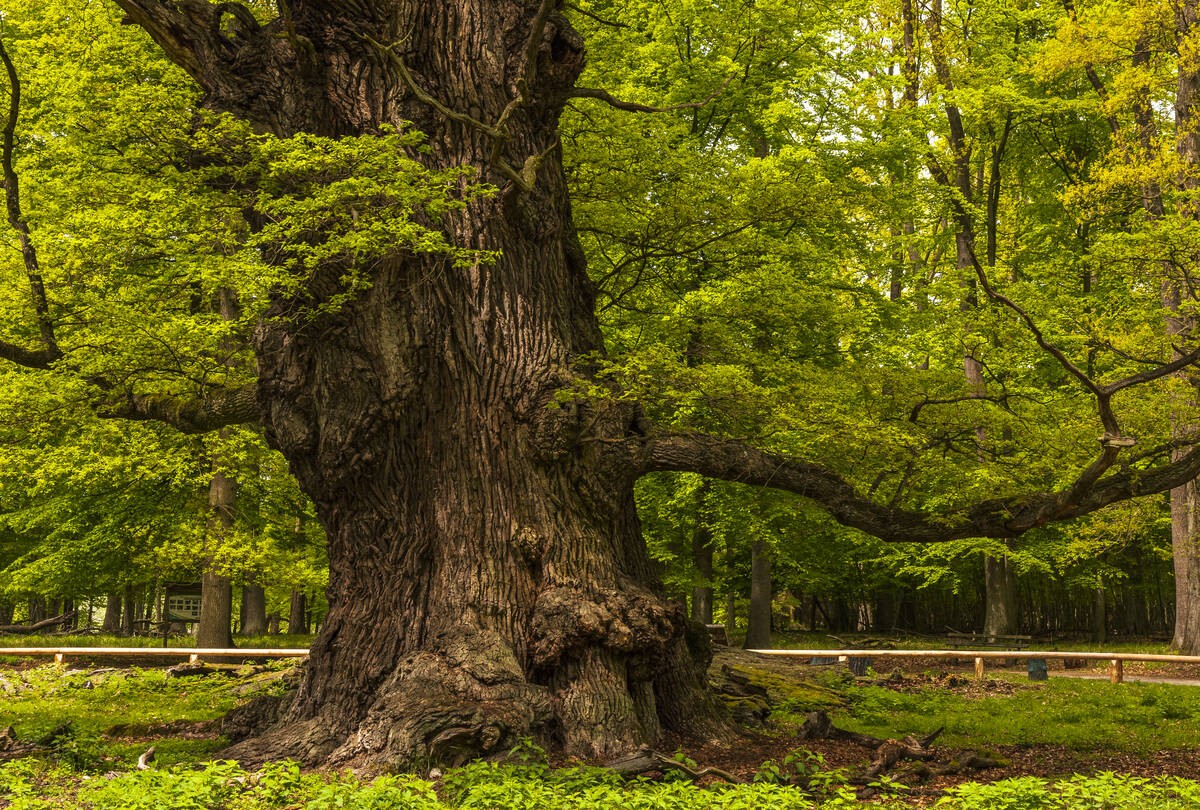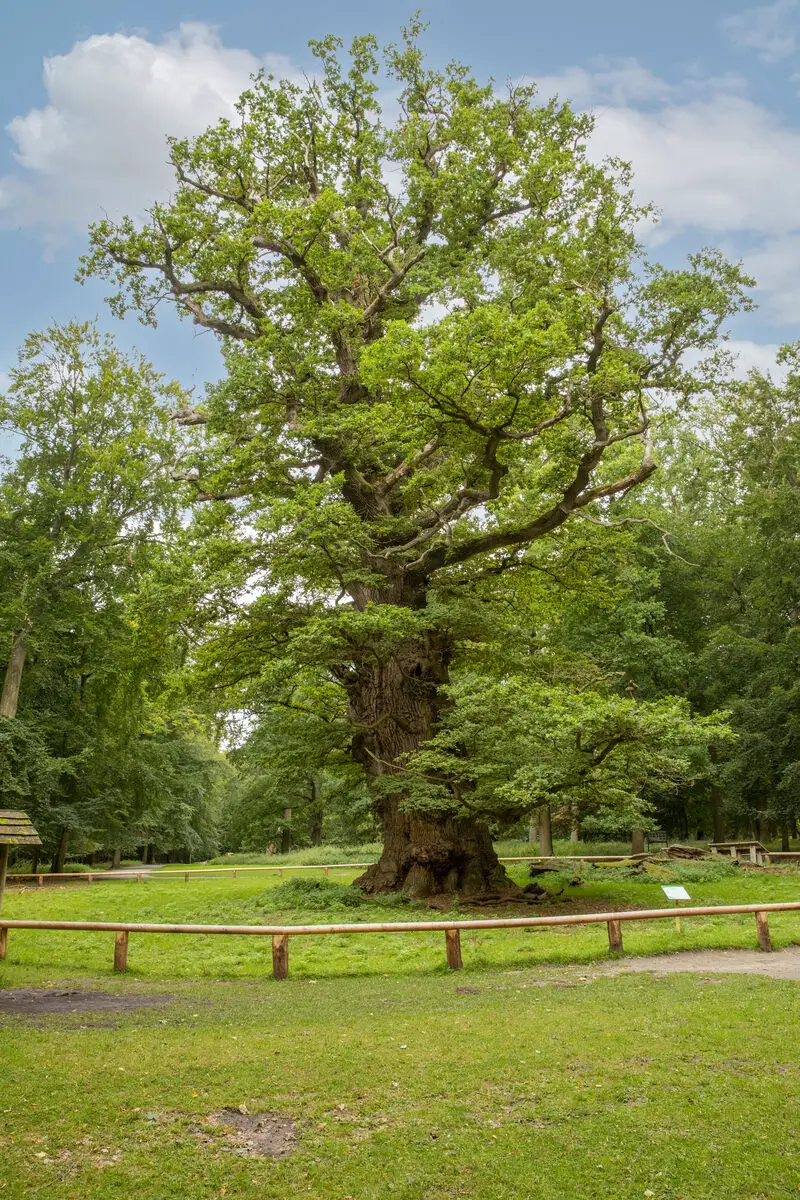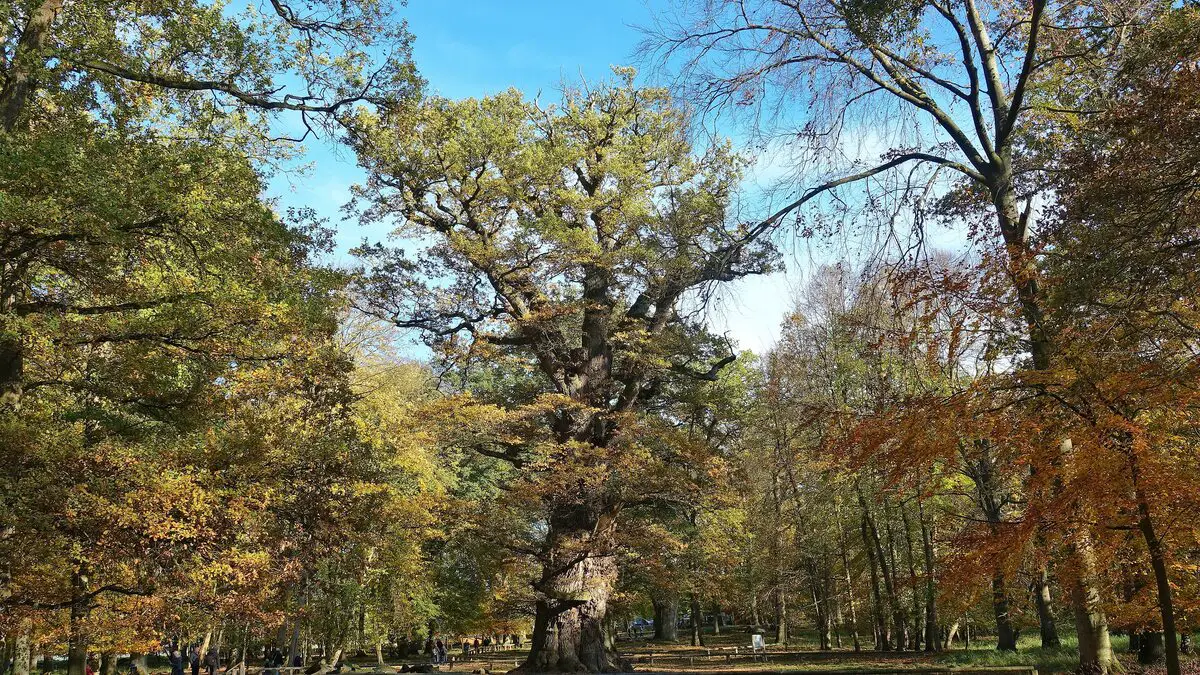Wonder
Uralteiche in Ivenack

 In short
In short
The most magnificent tree in Germany could be Uralteiche in Ivenack – a beautiful oak-tree in the historical forests near Ivenack palace.
 45.3%
45.3%
GPS coordinates
Location, address
Alternate names
Species
Circumference
Height
Age
Map of the site
If you see this after your page is loaded completely, leafletJS files are missing.
 In detail
In detail
The most magnificent oak-tree of the world could be the Uralteiche in Ivenack – a gorgeous, lively tree with a circumference of 11.7 m (at 1.3 m height) and height of 32 m. There exist oak-trees with larger circumference and higher oak-trees, but Uralteiche unites extreme thickness, height and vitality.
Description

This tree-giant is located in a wonderful, ancient man-made forest – the 75 ha large “Ivenacker Eichen” natural monument, known also as Ivenack Tiergarten.
Visitors should pay an entrance fee and then can enter this beautiful forest where a herd of some 80 – 100 European fallow deer can be met.
Uralteiche is the largest of the local six giant oak-trees. Sometimes these trees are called “1000 jährigen Ivenacker Eichen” – “1000 years old Ivenack oak-trees”. This name is not correct as the largest trees are younger, some 500-850 years old.
Uralteiche has been well known and the oldest known measurement of its trunk was done in 1857, when its circumference was 9.92 m (2.). The tree exceeded the circumference of 10 m in the late 19th century and 11 m – around 1994. Thus, it seems, since the 1990ies the tree grows faster.
The other five giant oak-trees in Ivenacker Tiergarten are:
- Knusteiche – 9.4 m circumference and a height of 29 m (June 2022). This also is a magnificent tree with massive trunk that maintains its circumference to great heights.
- Pferdekopfeiche – 8.95 m circumference and a height of 23 m (June 2016).
- 8.14 m thick and 25 m high oak-tree (June 2022).
- 7.26 m thick and 30 m high oak-tree (June 2022).
- 6.91 m thick and 22 m high oak-tree (June 2022).
In the earlier times there were other enormous oak-trees in this forest that are lost now.
History and legends

Oak-trees of Ivenack grow in an ancient man-made forest. Already some thousand years ago local Slavic people kept cattle in this forest and there were built sheds for these animals. Hence the forest got its ancient name – Hutewald or Hudewald (forest of sheds).
After the conquest of these lands started the Christianisation and a Cistercian monastery was founded in Ivenack around 1250-1252. Hudewald became a property of this cloister and the cattle feeding in this fairly old forest continued. Animals in a way tended this forest – oak trees were fertilized while the shoots of shrubs were duly eaten, maintaining a fine meadow around the increasingly large oak-trees.
During the Thirty Years’ War (1618-1648) the cloister and surrounding villages were demolished and Hudewald gradually turned into a natural forest.
In 1709 Ivenack together with its historical forest became a property of Ernst Christoph von Koppelow and he started to create the contemporary wonderful landscape of Ivenacker Tiergarten. He also built the palace and a church in the site of former cloister.
Since the 18th century this forest has not seen much change and is a wonderful natural area up to this day.
There are also some legends about the trees (3.). One of them tells that these trees are nuns who were turned into oaks due to their sins and will be released after 1000 years when the trees will die. Another tells about a stallion Herodot which was hidden into hollow of one of the giant oak-trees during the war with Napoleon.
References
- Uralteiche im Ivenacker Tiergarten (vormals Ringeiche), Baumkunde.de. Accessed on May 14, 2023.
- Uralteiche im Ivenacker Tiergarten (vormals Ringeiche), Register-Nr.: 80, Forum on Baumkunde.de. Accessed on May 15, 2023.
- 1000jährige Ivenacker Eichen, Killikus. Accessed on May 15, 2023.
 Linked articles
Linked articles

Wonders of Germany
Germany has a picturesque landscape and rather many natural landmarks, but these are overshadowed by the rich and diverse cultural heritage. From time to time immense values have been lost in warfare, but Germans have duly rebuilt their cultural treasures and are constantly creating new values.

Trees
The category includes some of the most impressive and interesting separate trees in the world. The total number of tree species in the world still is a wild guess – maybe 10,000 and maybe 100,000 but most likely somewhere in between. Every month there are reported new tree species from the whole world, including Western Europe.

Wonders of Europe
The heritage of Europe is diverse and endlessly interesting. Incomparably rich is the wealth of European historical architecture, but this part of the world has exciting natural heritage and archaeological heritage as well.
 Recommended books
Recommended books
Oak: The Frame of Civilization
Professional arborist and award-winning nature writer William Bryant Logan deftly relates the delightful history of the reciprocal relationship between humans and oak trees since time immemorial―a profound link that has almost been forgotten. From the ink of Bach’s cantatas to the first boat to reach the New World to the wagon, the barrel, and the sword, oak trees have been a constant presence throughout our history.
Collins Tree Guide
This illustrated field guide, by David More and Owen Johnson, covers the trees of Britian and non-Mediterranean Europe.


